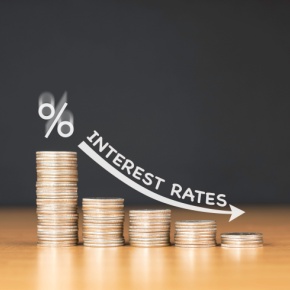The current state of the housing market remains a huge problem for 2%, as home values remain at all-time highs due to an undersupplied market and many homeowners who are locked in at 2% to 4% mortgages, constraining inventory and leading to sticky rents.
Interactive Brokers Traders Insight
The Federal Reserve will have to wait even longer for evidence confirming that gains in fighting price pressures are durable before it turns accommodative with this morning's data showing higher-than-anticipated inflation.
The Fed's interest rate policy has been accused of not properly accounting for the amounts of fiscal stimulus that have been occurring in recent years, which could impact the current rally and future economic growth.
The economy seems to be doing just fine, with GDP around the 3% levels to which we had become accustomed, making it unclear why rate cuts are even necessary, particularly in the US.
The entrenched nature of inflation, including high wages, fierce services spending, increased input costs and supply chain issues, expectations for rate cuts are likely to fade as the potential for another Fed rate increase becomes more likely.
A weakening consumer likely leads to stagflation, with the credit card situation at small banks rising to the loftiest level in history, and a potential government shutdown serving a severe blow to what's left of consumer resilience.
As inflation reaches fresh '24 highs, rates are expected to continue their upward trend, making it a challenging environment for investors.
As we look back at our best and worst calls of 2022, it's clear that we got more correct than not. However, I wish we were more emphatic about some of them.
Powell reiterated that he doesn't think the Fed will cut rates at its March meeting, signaling that mid-year would likely be a better time to introduce a cut, citing the need for more data to illustrate that recent gains in controlling inflation aren't transitory.
The expansion marks the first month of growth in nine, with business confidence being a key driver, propelling the positive change as retailers briskly increased inventories in anticipation of improved future performance.
The optimism about a March rate cut has supported capital markets and has loosened financial conditions, but the author believes the optimism may be excessive and that the Fed may delay rate cuts until May or June.
The current Chair has a knack for making more market-friendly comments than his predecessors or many of his global peers, a trait that can be attributed to his 'Goldilocks' mentality, which is focused on what can go right.









